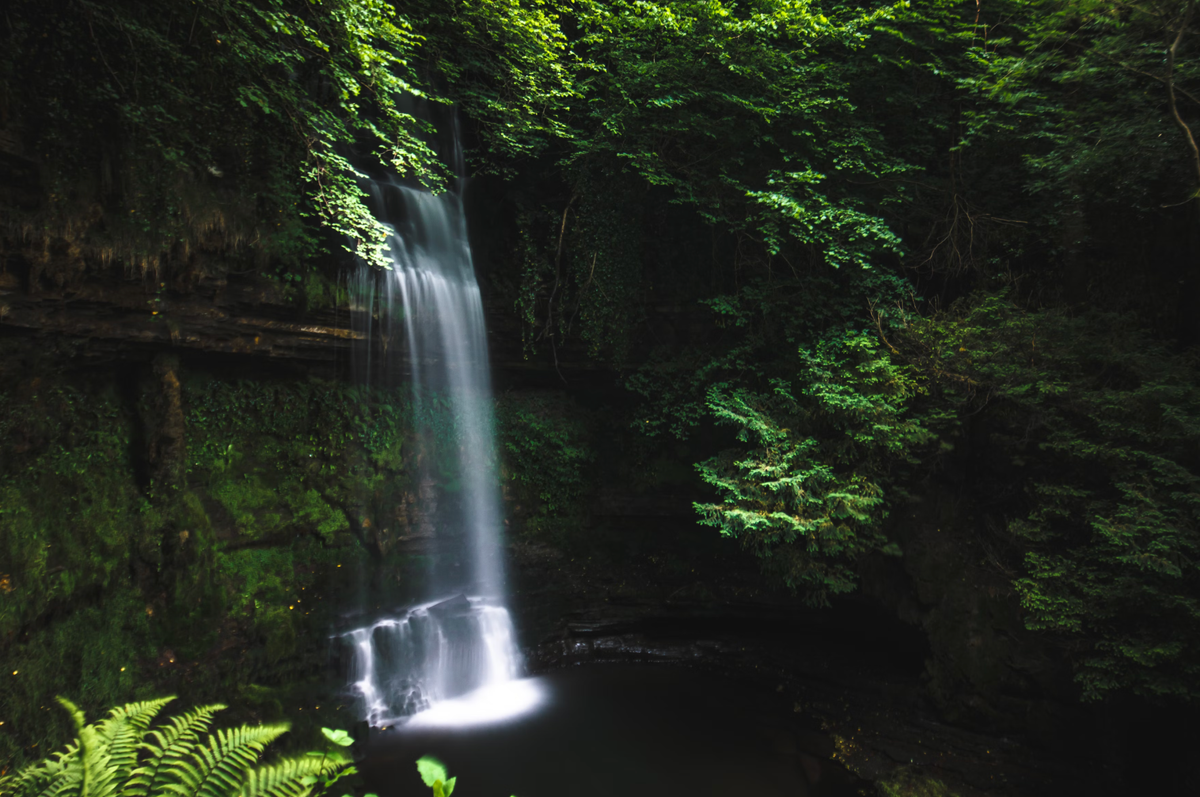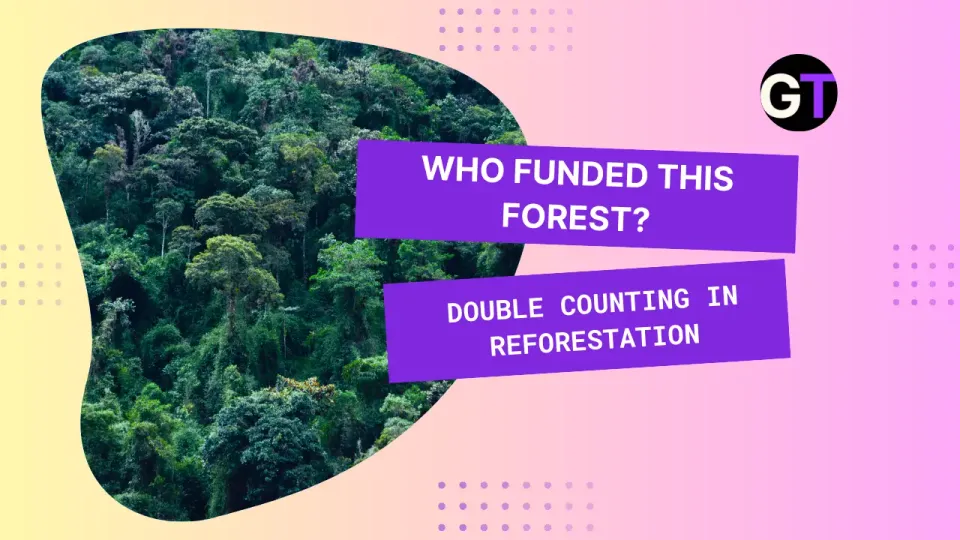Can Forest Expansion Balance Climate Change, Economic Growth and Ecological Health?
When it comes to managing woodlands to meet multiple needs, Irish activists underscore the importance of considering the forest as well as the trees.

When it comes to managing woodlands to meet multiple needs, Irish activists underscore the importance of considering the forest as well as the trees.
This article by Mike Waltman was originally published in Ensia.
Thousands of years ago, oak, ash and hazel trees blanketed with moss and ivy grew from a teeming understory of fern, willow and scattered mushrooms, nearly completely covering Ireland in lush green layers. That was before Vikings began pillaging Irish monasteries and chopping down trees to build their notorious raiding fleet. It was before the English felled Ireland’s forests to construct vessels bound for distant shores. Centuries of deforestation for lumber and agriculture reduced Ireland’s forest cover from 80% to around 1%.
While that number has rebounded to about 11%, Ireland remains one of Europe’s least forested countries. So, in 2022 the island nation launched an aggressive forestry expansion initiative, with a goal of increasing forest cover to 18% by planting 450,000 hectares (more than 1 million acres) before 2050, partly in an effort to uphold international commitments to carbon neutrality.
Acting on these ambitions, Coillte, a government-private organization that manages 440,000 hectares (1 million acres) of woodland and other land, including 50% of Ireland’s forests, has partnered with UK investment firm Gresham house in a US$37 million (€35 million) forestry initiative. The partnership promises to address the needs of a changing climate while enhancing socioeconomic development. However, the initiative has been met with resistance from some.
“They’re addicted to profit,” said Andrew St. Ledger, the founder of the not-for-profit organization The Woodland League, while discussing Coillte’s forestry expansion approach. (St. Ledger, who spent his life advocating for the restoration of native Irish forests and promoting the healing power of trees for both people and the environment, passed away not long after speaking with Ensia about his beloved “Inis na Bhfiodhadh,” an ancient Celtic-Bardic term for Ireland meaning “Island of the sacred trees.”)
Resistance to Coillte’s initiative was seen earlier this year when farmers and environmentalists joined forces in an unlikely alliance to express outrage over the deal. “We had protests on the street with … people assembled at Coillte headquarters for a celebration of public ownership,” said St. Ledger.
The Coillte–Gresham House deal aims to fuel the expansion of Irish woodland by funding the purchase and conversion of rural land to forestry. Opponents of the deal argue that the influx of private money will lead to a land grab, driving up the cost of land and pricing out locals.
Many also worry that the investment might continue to support the aspects of Coillte’s forestry management practices that emphasize timber harvesting by planting fast-growing tree species like Sitka spruce, which can be harvested sooner rather than later, leading to monoculture plantations and short-cycle clear-cutting.
Ecological Concerns
“They’re not forests,” said St. Ledger of nonnative Sitka spruce plantations, which account for close to half of Ireland’s tree cover. The monoculture method, where trees stand in tight rows and allow little sunlight to reach the ground, discouraging growth in the understory, is not unique to Ireland. Timber companies worldwide pack spruce, firs, pines and other fast-growing species into uniform farms to maximize profit, often at the expense of ecological health.
The dense uniformity of such plantations can cause biodiversity to suffer — creating habitat less capable of supporting varied species of flora, insects and animals; altering protection from pests; and fostering poor soil composition.
Adding to the ecological concerns is the plantation model’s reliance on chemical inputs. Seeking faster, more reliable returns on investment, timber companies apply fertilizers to accelerate growth and pesticides to defend against disease. However, without diverse ground cover or a strong root system, erosion and runoff are common problems, potentially contaminating freshwater with those chemicals.
Carbon Sequestration
Despite the ecological effects, monoculture is an effective model for rapidly planting trees at scale. Coupled with the lure of economic gains from timber, it is an attractive choice for countries pursuing ambitious climate goals, such as Ireland’s target of a 51% reduction in greenhouse gas emissions by 2030 (a target the country is currently not on track to achieve). Proponents of fast-growing tree species with short life cycles often point to the higher carbon sequestration rate the trees experience in their early years. However, the reality of a forest’s carbon storage potential is complex.
“Young trees can sequester more carbon in a plantation because they’re forced to grow with fertilizer,” said St. Ledger. Proponents of monoculture plantations “really cling onto that argument. The problem is that these trees are so immature that carbon isn’t given a chance to accumulate. And it’s not just the carbon in the tree. The root and soil carbon are ignored in the debate.”
A carbon sequestration study published in 2016 supports the value of mixed-species stands for carbon sequestration, stating, “Our results suggest that local species composition plays an important role on [soil organic carbon] stock.” The research found that a diverse leaf litter, in addition to higher root turnover rates in mixed species stands, contributed to greater carbon storage than observed in single-species stands.
Additionally, a 2022 study conducted in Spain highlights the benefits of the complementary effect in mixed-species forests. The study, using a 100-year simulation period, suggests that ecological diversity allows mixed forests to more efficiently use resources, and the researchers found “a clear tendency toward higher CO2 stocks in mixed stands emerged over long simulation periods, which is consistent with previous studies.”
Balancing Economics and Ecology
Forestry management strategies play a pivotal role in determining the ultimate value of a forest. Strategies can range from pure conservation prioritizing ecological health to intensive forest management (IFM) focusing on economic outcomes. Seeking a balance between these two ends of the management spectrum, extensive forest management (EFM) uses less intensive, nature-based silviculture practices to achieve diverse forestry values.
Nature-based silviculture utilizes natural regeneration and promotes mixed species through planting techniques such as incorporation of mosaic patterns that create clusters of diverse tree species with varied spacing and ages to mimic a natural forest structure. The approach also integrates these planting techniques with sustainable harvesting practices, eliminating clear-cutting in favor of selective tree cutting that maintains a multilayered, continuous cover forest.
“Suggesting any potential commercial use from native forests on private land, particularly harvesting timber, can be met with strong opposition from some environmentalists,” says Paul Quinlan, a trustee at the nonprofit Tāne’s Tree Trust in New Zealand. “Naturally, they fear it might erode the hard-won gains of the conservation movement.”
Quinlan’s background as a landscape architect informs his work with forestry projects that strive to balance ecological health, carbon sequestration and economic incentives. He worries that a pure preservationist approach to conservation segregates land use between commercial production and natural restoration, often marginalizing ecological priorities.
The trust’s projects implement nature-based silviculture management methods that encourage active forest management that replicates natural conditions, promotes biodiversity and balances diverse forest functions such as habitat creation, watershed regulation, timber production, carbon sequestration and public recreation. The trust also emphasizes planting, maintenance and harvesting decisions influenced by site-specific conditions.
“While there is a preference for indigenous species, stands can include exotic species or involve managing a transition from exotic monocultures to mixed species or native forest,” explains Quinlan.
“Silvicultural practices and systems could be used to convert existing stands to more suitable stand structures,” reads a 2021 study on forest carbon management, “which may increase [carbon] sequestration as well as mitigate and adapt ecosystems to the effects of global change.”
Examining the carbon sequestration differences across three strategies — pure conservation, IFM and EFM — the research finds that EFM “is a compromise between conservation and IFM and is more effective in the long term.”
As an alternative diversification strategy, integrated farming systems such as agroforestry and silvopasture aim to blend forestry and traditional agriculture, while fostering biodiversity, mitigating climate change and preserving rural cultural heritage. A 2020 study details the ecological and agricultural advantages of agroforestry systems. These benefits include enhanced productivity through improved soil health, reduced soil erosion, less need for chemical inputs, increased water retention, diversified farm income and overall resilience to pests and diseases. The study also acknowledges agroforestry’s role in combating climate change through the carbon sequestration potential of planted trees and improved soil carbon storage.

Institutional Change
“We always place emphasis on scientific data,” says Joe Gowran, the CEO of Woodlands of Ireland (WOI), in reference to their strategies for influencing policy. The charity organization advances native woodland conservation and nature-based silviculture in Ireland by, among other things, lobbying for institutional change. They collaborate with other entities, including Coillte, offering constructive, research-based feedback informed by a panel of industry, academic and landowner stakeholders.
In their 2022 Strategic Vision for Our Future Forest Estates, Coillte emphasizes a commitment to delivering multiple benefits from forests, with a renewed focus on climate action, biodiversity and recreation, while also delivering timber products. (Efforts to contact Coillte went unmet by the time of publication.)
But, says Gowran, “Coillte presents challenges because their main focus is perpetuating and expanding softwood timber supplies.” Even so, he points to entities such as Coillte Nature and The Nature Trust supported by Coillite that carry out native woodland restoration projects across Ireland.
“A main driver for these projects is the availability of native woodland scheme grants, which WOI had a key role in developing,” says Gowran. These government grants provide funding for projects that protect, enhance and establish native forests across Ireland. Gowran also highlights that the absence of institutional education in sustainable forestry management is a major obstacle in shifting toward silvicultural systems of continuous cover forest in Ireland. “There is no forestry education and training strategy here currently,” he says.
Working to fix this shortcoming, WOI collaborates with Ireland’s National Parks Wildlife Service and the Forest Service of the Department of Agriculture, Food and the Marine, helping identify missing elements in woodland management courses as well as reviewing the requirements for establishing a silviculture apprenticeship.
Community Forestry
“We’re seeing people come together and have conversations. And the conversations are more robust than ever,” says Daniel Wear, forest program manager at Sustainable Northwest in the U.S. At this Portland, Oregon-based nonprofit, Wear empowers local groups to take the lead on land use projects through community forestry.
“Community forestry helps to create a conversation between community members, timber companies and government agencies where they feel like their voice is being heard and their perspectives are being represented,” he says, while emphasizing that community forestry doesn’t operate by specific standards but on a case-by-case basis to meet community needs.
Gowran believes community forestry can provide the Irish public with a voice as well. “It would be useful to have committees linked to a local authority,” he says, “so that all forest owners must engage with the public and community involvement in forest management is strengthened.”
Helping empower community forestry through grassroots education, The Woodland League in Ireland has facilitated government-sponsored Forest Knowledge Transfer Groups to educate small-scale landowners on sustainable forestry practices. “Our objective is to create cooperatives to join the woodland owners together,” St. Ledger said of The Woodland League. He hoped these cooperatives would allow group participants to establish community support systems and share information.
“Ireland is a small country and could actually lead the way in natural forest restoration,” said St. Ledger. “It has a rich cultural woodland history, the tragic loss of it and now a revival. I firmly believe Ireland could be a beacon.”
License
Waltman, M. (2023, December 19). Can forest expansion balance climate change, economic growth and ecological health? Republished with permission from Ensia under the terms of the Creative Commons Attribution-NoDerivs 3.0 Unported license.




